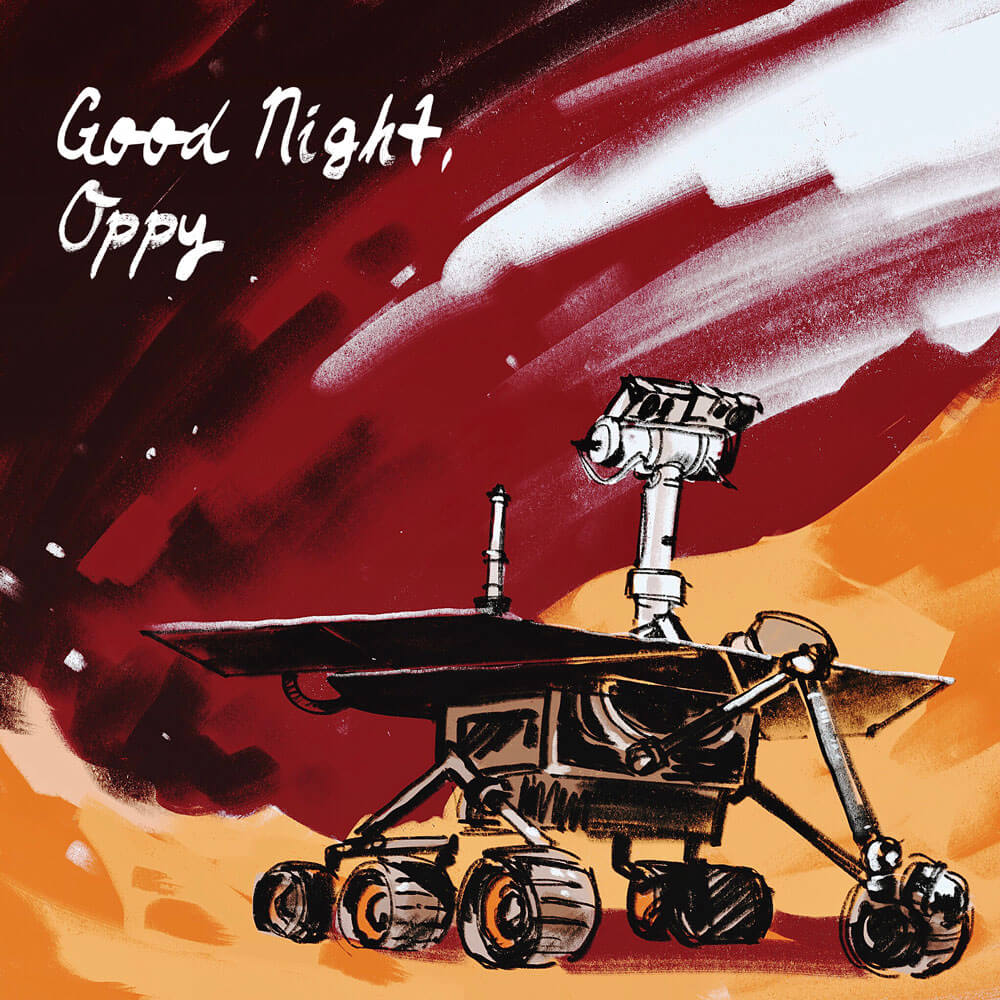
Written by Rosalie Cormier
Illustrated by Amy Zhang
In recent weeks, news of Opportunity’s demise has taken the astronomical community (and the internet) by storm, reminding us all of our innate desire to learn more about worlds beyond our own.
The MER-B Opportunity Rover, affectionately dubbed “Oppy”, was one half of a pair of NASA rovers that landed on the surface of Mars in early 2004. The rovers, launched as part of the Mars Exploration Program, set out to chart the Martian surface and to routinely collect geological data, allowing scientists back home to analyze the composition of Mars’ terrain. Ultimately, the program aims to determine whether a human mission to Mars will ever be possible, and so relies on information gathered by these and similar exploratory rovers.
Opportunity and its counterpart, Spirit, were designed to remain active for approximately three months. Both rovers continued to function well beyond this initial goal. While Spirit got stuck five years into its mission; Opportunity, even more remarkably, remained mobile and maintained communications with Earth until midway through 2018 when a planet-wide sandstorm struck the rover down, exceeding its intended mission length by a whopping 14 years! The rovers’ mission was not declared complete until February of 2019, at which point Opportunity formally broke the records for longest time having worked on another planet as well as furthest distance travelled by a Mars rover (a grand total of 42.1km).
Opportunity‘s resoundingly successful journey was a delicate balance of careful maneuvering by its engineers and pure luck. It was not previously known that Mars’ atmosphere produced winds far more active than those on Earth, and extreme winds regularly cleared debris from Opportunity‘s solar panels, extending its lifespan indefinitely. The rover’s mission was not without challenge; it spent many months stuck in craters while its controllers, back on Earth, simulated Martian conditions to learn how to direct it out to level ground.
The Mars Exploration Rover mission was the first long-term study of the environment on a planet other than Earth. In particular, Opportunity‘s findings contain direct evidence of pH-neutral water, suggesting that Mars may once have been a warm, wet territory complete with hot springs. Analysis of minerals including hematite, which typically forms in water, and oddly-shaped rock formations support the hypothesis that flowing waters, and with them microscopic life forms, may once have flourished on the red planet. The hundreds of thousands of images sent back to Earth by Opportunity are certain to keep scientists busy for a while and will hopefully pave the way for further insights into the Martian climate.
The announcement of the end of this particular mission is bittersweet, as it is the end of an era but also a symbol of our collective ability to go places and achieve things far beyond our expectations. While the lights may be low and the battery dim for Oppy, its service has opened infinite avenues for further exploration of Mars and the rest of the solar system. Perhaps one day, a human explorer will discover the rover on the planet’s dusty surface and will bring it back home.
Sources:
- Ros E, et al. Nuts and Berries for Heart Health. Curr Atheroscler Rep (2010), 12:397–406, Public Health Agency of Canada, Heart and Stroke